Wrocław, once known as Breslau, holds a complex legacy in World War II history. As a stronghold for the NSDAP in Eastern Germany, the city’s transformation into a ‘Festung’ in 1945 led to devastating destruction. Yet, Wrocław stands resilient today, embodying both the haunting remnants of fascism and the spirit of democratic renewal. From Solny Square to Ostrow Tumski, the city’s key sites serve as reminders of its violent past and the enduring strength of its inhabitants. Uncovering Wrocław’s profound history provides a powerful window into the broader impacts of the war on Eastern Europe.
Key Points
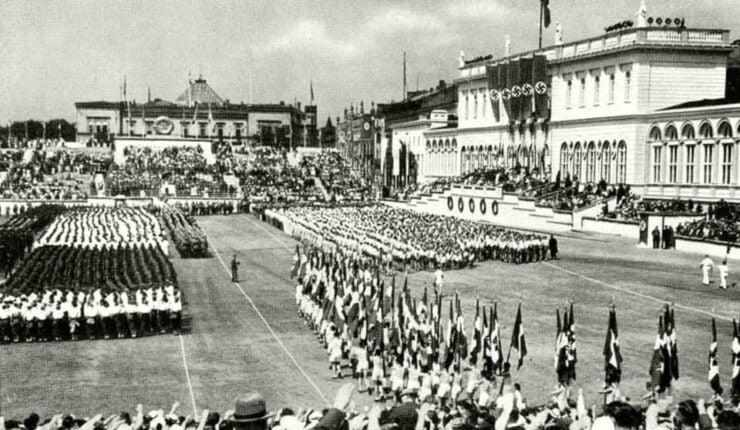
- Wrocław, formerly known as Breslau, was a stronghold of the NSDAP (Nazi party) in Germany, with the largest NSDAP headquarters in Eastern Germany located there.
- Hitler visited Breslau multiple times, emphasizing its significance, and the city was later declared a ‘Festung’ (fortress) in 1945, leading to its destruction.
- Key locations of the tour include Solny Square, the former Castle Square, Świdnicka Street, and Partisan Hill, all of which played crucial roles in Wrocław’s wartime history.
- The tour explores the transformation of Wrocław from a symbol of fascism to a peaceful public space, and the enduring legacy of the city’s wartime resilience.
- The tour concludes at the Cathedral on Ostrów Tumski, where fierce battles between German defenders and Soviet forces took place, and which now stands as a symbol of Wrocław’s perseverance.
Tour Overview
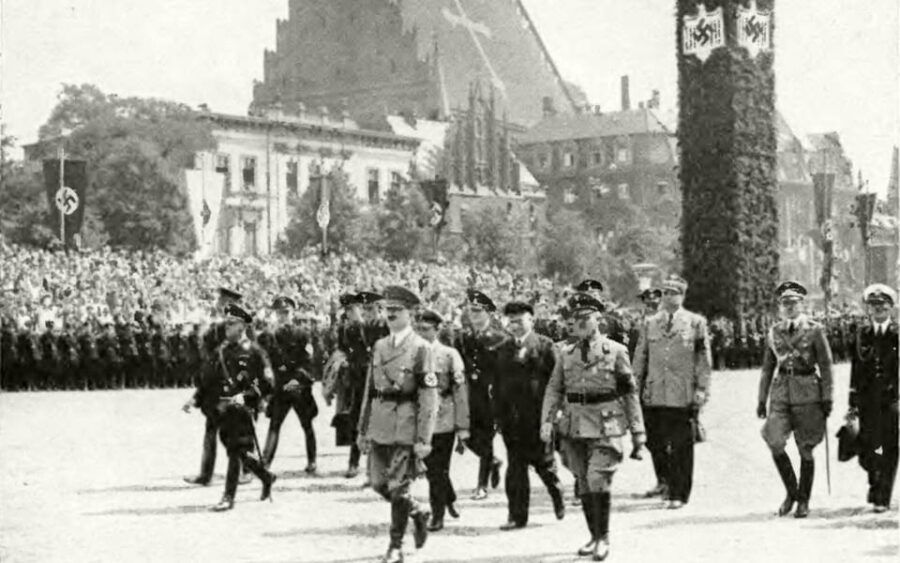
This tour provides a comprehensive exploration of Wrocław’s complex World War II history, delving into the city’s former identity as Breslau and its deep association with the rise of the NSDAP movement in Germany.
Priced at $156.64 for a private group of up to 14 participants, the 2-hour tour is available in Polish and German, and is wheelchair accessible.
Guests can take advantage of the free cancellation policy up to 24 hours in advance for a full refund.
The tour starts at the Restauracja Piwnica Świdnicka in Wrocław’s Market Square, and concludes at the former NSDAP headquarters, allowing participants to explore the Ostrów Tumski and its monuments independently.
Want to see more of Wroclaw? Other city tours we've reviewed
Historical Context
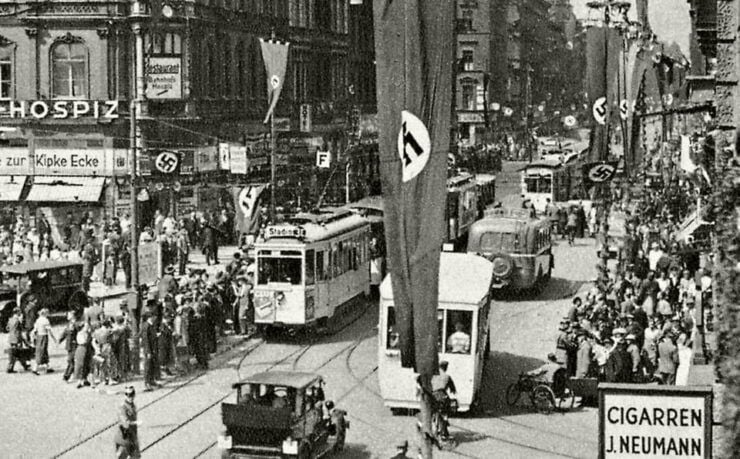
Wrocław, formerly known as Breslau, was the capital of Silesia and had a strong association with the NSDAP movement in Germany since the early 1930s. The city was home to the largest NSDAP headquarters in Eastern Germany, and Hitler himself visited Breslau multiple times. In 1945, the city was declared a "Festung" (fortress), leading to significant destruction and transformation in the post-war period.
| City Background | Nazi Influence | 1945 Events |
|---|---|---|
| Wrocław (formerly Breslau) was the capital of Silesia. | The largest NSDAP headquarters in Eastern Germany were located in Wrocław. | Breslau was declared a "Festung" (fortress), leading to significant destruction. |
| The city was strongly associated with the NSDAP movement since the early 1930s. | Hitler visited Breslau multiple times. | The city’s transformation began in the post-war period. |
Key Locations
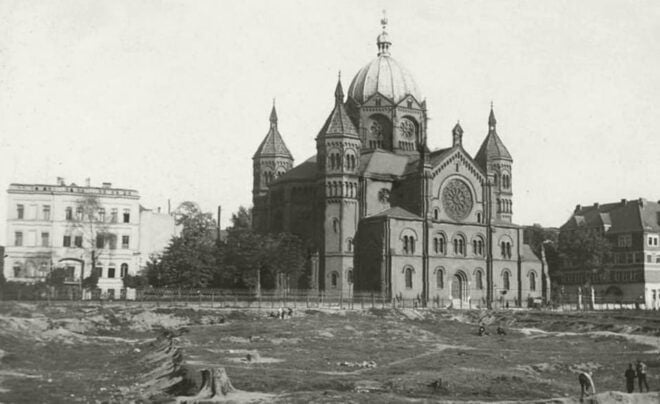
The tour begins at the Restauracja Piwnica Świdnicka in Wrocław’s Market Square, where you will explore several key locations from the city’s war-torn history.
They’ll visit Solny Square, where the first bunkers for local protection were built. Next, they’ll head to the Former Castle Square, the venue for Nazi parades, where Hitler greeted supporters from the balcony of the Monopol Hotel.
The tour then takes them down Świdnicka Street, where inhabitants welcomed Hitler and where the Soviet Army entered in 1945. At Partisan Hill, they’ll see the remains of underground bunkers, the command center of the Breslau Fortress.
The tour concludes at the beautifully restored Cathedral on Ostrów Tumski, the site of fierce battles in 1945.
Solny Square
As participants begin their tour, they’ll first visit Solny Square, where the city’s authorities had constructed the initial protective bunkers for the local population during the war.
This location was a critical hub for the Breslau Fortress defenses, as the residents were forced to seek shelter here when the Soviet Army’s bombardment of the city intensified.
The tour guide will explain how these early bunkers were intended to shield civilians from the impending battle, though they ultimately provided little protection as the fighting raged on.
Solny Square serves as a poignant reminder of Wrocław’s (formerly Breslau) wartime trials and the futile efforts to safeguard its people from the devastation that was to come.
More Great Thing To Do NearbyFormer Castle Square
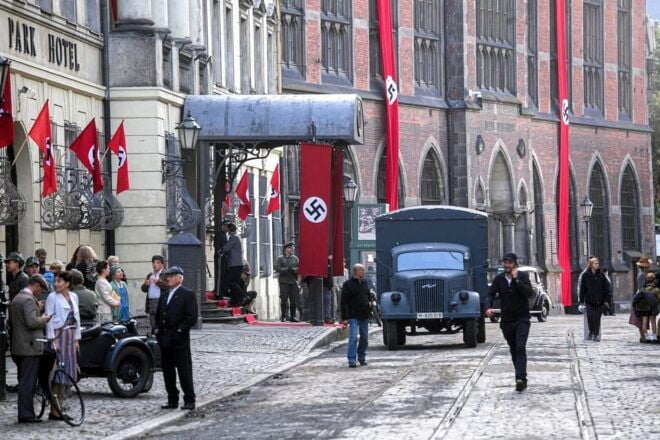
From Solny Square, the tour moves on to the Former Castle Square, once the venue for grand Nazi parades where Hitler himself greeted his supporters from the balcony of the nearby Monopol Hotel. This square served as a stage for the NSDAP’s display of power, with marches, rallies, and speeches held in front of the towering Nazi flag. Today, the square bears little resemblance to its former self, with only a few architectural remnants hinting at its history.
| Then | Now | Significance |
|---|---|---|
| Nazi parades | Quiet public space | Transformation from symbol of fascism to peaceful gathering place |
| Hitler’s balcony addresses | Empty hotel balcony | Reminder of the city’s dark past |
| Crowds cheering the Führer | Passersby enjoying the square | Shift from totalitarian control to democratic freedom |
Swidnicka Street
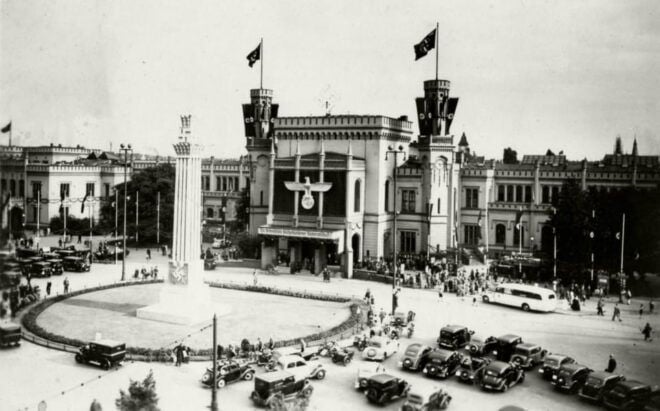
Swidnicka Street’s representative nature comes to the fore as it served as a symbolic welcome for Hitler’s visits, where inhabitants cheered his arrival, and later witnessed the entry of the Soviet Army in 1945.
This central street in Breslau, now Wroclaw, was a site of stark contrasts – celebrating the Nazi leader’s presence one moment, then facing the devastation of war the next.
The street’s facades remain as a testament to the city’s tumultuous history, with some buildings still bearing the scars of the fierce battles that raged here.
As visitors walk along Swidnicka Street, they can imagine the dramatic scenes that unfolded, from the fanfare of Hitler’s parades to the chaos of the Soviet advance.
Partisan Hill
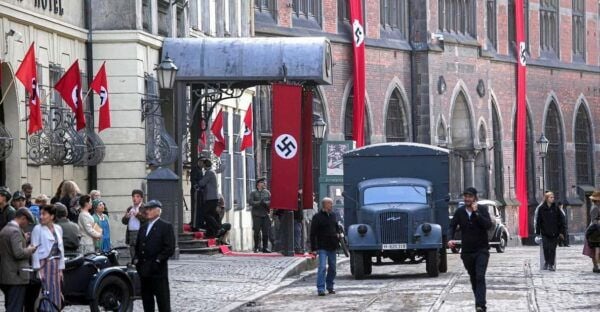
Perched atop a hill, the Partisan Hill served as the command center of the Breslau Fortress during the final months of World War II. Remnants of the underground bunkers used by the fortress defenders can still be seen by visitors today, providing a tangible connection to the city’s wartime history.
| Partisan Hill | Key Features |
|---|---|
| Command Center | Breslau Fortress |
| Underground Bunkers | Visible Remains |
| Wartime History | Tangible Connection |
| Visitor Attraction | Wartime Legacy |
The Partisan Hill stands as a poignant reminder of Wrocław’s tumultuous past, inviting visitors to explore the layers of history that shaped this resilient city.
Ostrow Tumski
Across the Oder River from the city center lies Ostrow Tumski, the historic cathedral island that witnessed fierce battles during the final months of World War II. This sacred site was the site of a brutal fight between the German defenders of the Breslau Fortress and the advancing Soviet forces.
Despite the destruction, the island’s centerpiece, the beautifully restored Cathedral, stands as a testament to the city’s resilience. The cathedral’s survival symbolizes the indomitable spirit of Wrocław’s people, who rebuilt their city from the ashes of war.
Visitors can explore the cathedral’s Gothic architecture, admire its stunning interiors, and reflect on the tumultuous history that unfolded here. Ostrow Tumski’s enduring legacy serves as a poignant reminder of the human cost of war and the power of perseverance in the face of adversity.
The cathedral island’s strategic location made it a crucial battleground during the final siege of Breslau.
Fierce street-to-street fighting resulted in extensive damage to the historic buildings on Ostrow Tumski.
Visitors can also learn about the cathedral’s role in the city’s wartime history, further enriching their understanding of this significant site.
Ultimately, Ostrow Tumski’s enduring legacy serves as a powerful reminder of resilience amidst the ravages of war.
Frequently Asked Questions
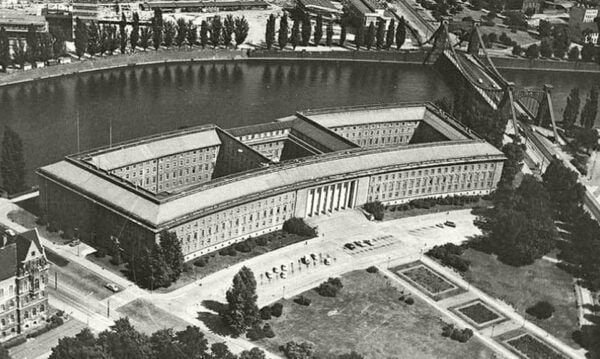
Can I Book This Tour for a Solo Traveler?
Yes, this tour can be booked for a solo traveler. The tour is offered as a private group experience, so individuals are welcome to join and will not be placed with other groups.
Do You Offer Any Discounts for Students or Seniors?
Yes, the tour operator offers discounted rates for students and seniors. Participants can inquire about these savings when booking the tour. The discounted prices make the experience more accessible for these groups.
Is There an Option to Extend the Tour Duration?
Yes, there is an option to extend the tour duration. Customers can inquire about extending the 2-hour tour when booking their reservation. Additional fees may apply for a longer tour experience.
Can I Purchase Souvenirs or Memorabilia Related to the Tour?
The tour doesn’t directly offer any souvenirs or memorabilia related to the experience. However, participants can explore the Ostrów Tumski area independently after the tour and find local shops selling historical items and mementos.
Do You Have Any Recommendations for Restaurants or Accommodations Near the Tour Location?
The tour’s starting point, Restauracja Piwnica Świdnicka, is located in Wrocław’s historic Market Square. There are numerous dining and accommodation options within walking distance, including traditional Polish restaurants and modern hotels catering to visitors.
The Sum Up
Wrocław’s complex history is etched into its landscape. The city’s resilience shines through, even as its past as ‘Breslau’ under Nazi rule casts a sobering shadow.
Key sites like Solny Square and Ostrow Tumski stand as reminders of the city’s turbulent journey, from fascism to democratic renewal.
Wrocław’s story is one of both suffering and perseverance, a testament to the enduring spirit of its people.
You can check if your dates are available here:More City Tours in Wroclaw
- From Wroclaw: Adrpach Rock City Trip with Private Driver
- Wroclaw: 3-Hour City WalkingTour with University & Cathedral
- Wroclaw: Private UNLIMITED beer incl. City Tour By Golf Cart
- Wroclaw: No Limit Beer City Tour Sightseeing By Golf Cart
- Wrocaw: Long City Guided-Walk and River Cruise (3 h)
- Wrocaw: Short City Guided-Walk and Boat-Cruise (2 h)
More Tour Reviews in Wroclaw
Looking for something different? Other Wroclaw activities we've written about
- From Wroclaw: Adrpach Rock City Trip with Private Driver
- Skip-the-line Ksiaz Castle from Wroclaw by Private Car
- Communism in Wroclaw and in Poland – Private Tour
- Wroclaw with licensed guide, 2 hours, professional and humorous!
- Fascinating Highlights of Wroclaw – Walking Tour
- Wroclaw Bike Tour
- Wroclaw: Giant Mountains & Valley of Palaces Day Tour
- From Wrocaw: Stalag Luft 3 Great Escape Tour
- Krakow Private Day Trip to Wroclaw with Transport and Guide
- Neon Paint – Painting and Wine in the Dark in the Wroclaw
- The Roots of Pozna (small group)
- Wrocaw: Chopin & Friends grand piano concerts
